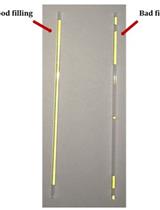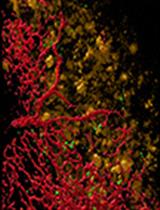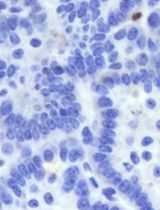- EN - English
- CN - 中文
Large-scale Isolation of Exosomes Derived from NK Cells for Anti-tumor Therapy
大规模分离来自NK细胞的外泌体用于抗肿瘤治疗
发布: 2023年06月05日第13卷第11期 DOI: 10.21769/BioProtoc.4693 浏览次数: 4537
评审: Kazem NouriIvan ShapovalovDanielle Harper
Abstract
Exosomes are lipid bilayer–enclosed vesicles, actively secreted by cells, containing proteins, lipids, nucleic acids, and other substances with multiple biological functions after entering target cells. Exosomes derived from NK cells have been shown to have certain anti-tumor effects and potential applications as chemotherapy drug carriers. These developments have resulted in high demand for exosomes. Although there has been large-scale industrial preparation of exosomes, they are only for generally engineered cells such as HEK 293T. The large-scale preparation of specific cellular exosomes is still a major problem in laboratory studies. Therefore, in this study, we used tangential flow filtration (TFF) to concentrate the culture supernatants isolated from NK cells and isolated NK cell–derived exosomes (NK-Exo) by ultracentrifugation. Through a series of characterization and functional verification of NK-Exo, the characterization, phenotype, and anti-tumor activity of NK-Exo were verified. Our study provides a considerably time- and labor-saving protocol for the isolation of NK-Exo.
Keywords: Exosome (外来体)Background
Adoptive NK cell therapy is a promising new approach for the treatment of hematological and solid malignancies, whose safety and efficacy have been tested in multiple studies mainly by utilizing autologous or allogeneic NK cells (van Vliet et al., 2021; Laskowski et al., 2022). Although the efficacy of adoptive NK cell therapy in the treatment of hematologic tumors has been verified, there are limitations to their application in solid tumors (van Vliet et al., 2021). Due to the existence of various biological barriers in the body, the migration and infiltration of NK cells to tumors are insufficient (Kang et al., 2021; Russo et al., 2021). The tumor microenvironment (TME) has immunosuppressive effects on NK cell function (Terrén et al., 2019; Di Pace et al., 2020); in addition, storing and transportation of NK cells is difficult, which increases the cost of treatment.
Exosomes are vesicles with a phospholipid bilayer membrane structure that are actively secreted by a variety of cells and carry the characteristic substances of their source cells (Shoae-Hassani et al., 2017; Dai et al., 2022; Rezaie et al., 2022). NK cell–derived exosomes (NK-Exo) have some significant advantages over NK cell therapy. Due to their nanoscale size and good tissue permeability, NK-Exo can cross some biological barriers such as the blood-tumor and blood-brain barriers (Yang et al., 2021). These are difficult for NK cells to cross (Nayyar et al., 2019; Yong et al., 2019; Kang et al., 2021), leading to the possibility of NK-Exo having a better tumor-targeting effect. It has been demonstrated that NK-Exo express perforin, granzyme B, Fas/FasL, and other anti-tumor substances (Zhu et al., 2017; Di Pace et al., 2020; Federici et al., 2020; Han et al., 2020). NK-Exo is not restricted to the TME and retains its original anti-tumor activity (Federici et al., 2020). In addition, NK-Exo has simpler preservation conditions than NK cells. The potential of implementing exosomes as an anti-tumor therapy has been demonstrated in several clinical trials (Chen et al., 2020; Nikfarjam et al., 2020; Lee et al., 2021; Rezaie et al., 2022). Therefore, we speculate that NK-Exo could also be used as a cell-free therapy to provide alternative anti-tumor immunotherapy.
However, the dose-demand for NK-Exo when used in anti-tumor therapy is enormous (Kibria et al., 2018; Kimiz-Gebologlu and Oncel, 2022). At present, laboratory methods for exosome isolation include ultracentrifugation, size exclusion chromatography, and exosome acquisition kits. However, it is challenging to isolate enough exosomes in supernatants in laboratory studies, such as exosomes derived from NK cells. Therefore, the large-scale preparation of exosomes is a key issue to be investigated urgently for further application.
Our protocol focuses on the following components: first, NK cell supernatants are collected and concentrated by tangential flow filtration (TFF) system, allowing us to obtain NK-Exo by ultracentrifugation. The interception efficiency of TFF system is evaluated by nanoflow assay. The obtained NK-Exo is then characterized to evaluate their phenotype, as well as morphological and structural integrity. Finally, the anti-tumor functionality of NK-Exo is evaluated in vitro. This protocol provides an efficient and convenient method to concentrate and isolate NK-Exo from large-scale NK cell culture supernatants, which can provide enough NK-Exo for solid tumor therapy.
Materials and reagents
0.22 μm filter (PALL, catalog number: 4612)
50 mL centrifuge tube (NEST, catalog number: 602001)
0.45 μm PVDF (Millipore)
RPMI 1640 medium (Gibco)
Fetal bovine serum (FBS) (Gibco)
1% penicillin/streptomycin (Gibco)
Centrifuge ware (Hitachi, catalog number: 3 29607A)
Annexin -FITC/PI Apoptosis Detection Kit (Absin, catalog number: abs50001)
Cell Counting kit 8 (Dojindo, catalog number: CK04)
FITC-conjugated mouse anti-human CD107a (BioLegend, catalog number: 328606)
PBS (meilunbio, catalog number: MA0015)
PE-conjugated mouse anti-human CD56 (BioLegend, catalog number: 304605)
PKH67 green fluorescent cell linker Midi kit (Sigma-Aldrich, catalog number: MIDI67)
Silica nanosphere cocktail (NanoFCM, catalog number: S16M-Exo)
DAPI (Sigma, catalog number: D9592)
4% paraformaldehyde (ChemCruz, catalog number: sc281692)
12% SDS-PAGE (TGX Stain-Free FastCast Acrylamide Kit, 12%) (Bio-Rad, catalog number: 161-0185)
SDS-PAGE sample loading buffer (5×) (Beyotime, catalog number: P0015L)
SDS-PAGE running buffer powder (Servicebio, catalog number: G2081-1L)
SDS-PAGE transfer buffer powder (Servicebio, catalog number: G2017)
Western blocking buffer (Beyotime, catalog number: P0023B-100ml)
Uranyl acetate (HSA Biotech)
RIPA (Solarbio)
PMSF (Sigma)
TEMED (Bio-Rad)
TBST (20×) (Solarbio)
Loading buffer (5×) (Beyotime)
10–180 kD marker (Absin)
Western chemiluminescent HRP substrate (Millipore, catalog number: WBKIS0100)
SKOV3 cells (China Center for Type Culture Collection, CCTCC)
OV-90 cells (China Center for Type Culture Collection, CCTCC)
Primary and secondary antibodies (Table 1)
Table 1. Primary and secondary antibodies
Antibody Species Host Company Catalog number Dilution ratio CD63 Human Rabbit Abcam ab134045 1:1,000 CD81 Human Rabbit CST 56039s 1:1,000 Calnexin Human Rabbit Biodragon BD-PT0613 1:1,000 CD56 Human Rabbit CST 99746s 1:1,000 Perforin Human Rabbit Biodragon BD-PT5792 1:1,000 Rabbit-HRP Rabbit Goat Absin Abs20040 1:5,000
Equipment
Transmission electron microscope (Hitachi, catalog number: HT-7700)
Ultracentrifuge (Hitachi, catalog number: CPN100N)
ChemiDoc XRS high sensitivity chemiluminescence instrument (Bio-Rad Laboratories)
Filter cassettes (100 kD) (Sartorius, catalog number: VF05H4)
Flow cytometer (Beckman Coulter Inc., model: FC500)
Fluorescence microscope (Olympus BX51)
Nanoflow cytometry (NanoFCM)
P28S rotor (Hitachi)
Peristaltic pump (Millipore, model: XX80EL005)
Autoclave (MEDNIF, model: LS-B50L)
Ultraviolet irradiation (SJMAEA)
Centrifuge (Eppendorf)
Biosafety cabinet (Thermo Scientific)
PowerPacTM (Bio-Rad)
Software
Fiji: ImageJ 1.53a
GraphPad Prism 8
NanoFCM software (NanoFCM Profession V1.0)
FlowJo 10
Procedure
文章信息
版权信息
© 2023 The Author(s); This is an open access article under the CC BY license (https://creativecommons.org/licenses/by/4.0/).
如何引用
Luo, H., Zhang, J., Yang, A., Ouyang, W., Long, S., Lin, X., Yang, N., Yang, Z., Zhang, Y., Wei, Y., Che, Q., Yang, Y., Guo, T. and Zhao, X. (2023). Large-scale Isolation of Exosomes Derived from NK Cells for Anti-tumor Therapy. Bio-protocol 13(11): e4693. DOI: 10.21769/BioProtoc.4693.
分类
免疫学 > 免疫疗法 > 化疗药物递送
癌症生物学 > 肿瘤免疫学 > 药物发现和分析
您对这篇实验方法有问题吗?
在此处发布您的问题,我们将邀请本文作者来回答。同时,我们会将您的问题发布到Bio-protocol Exchange,以便寻求社区成员的帮助。
Share
Bluesky
X
Copy link













